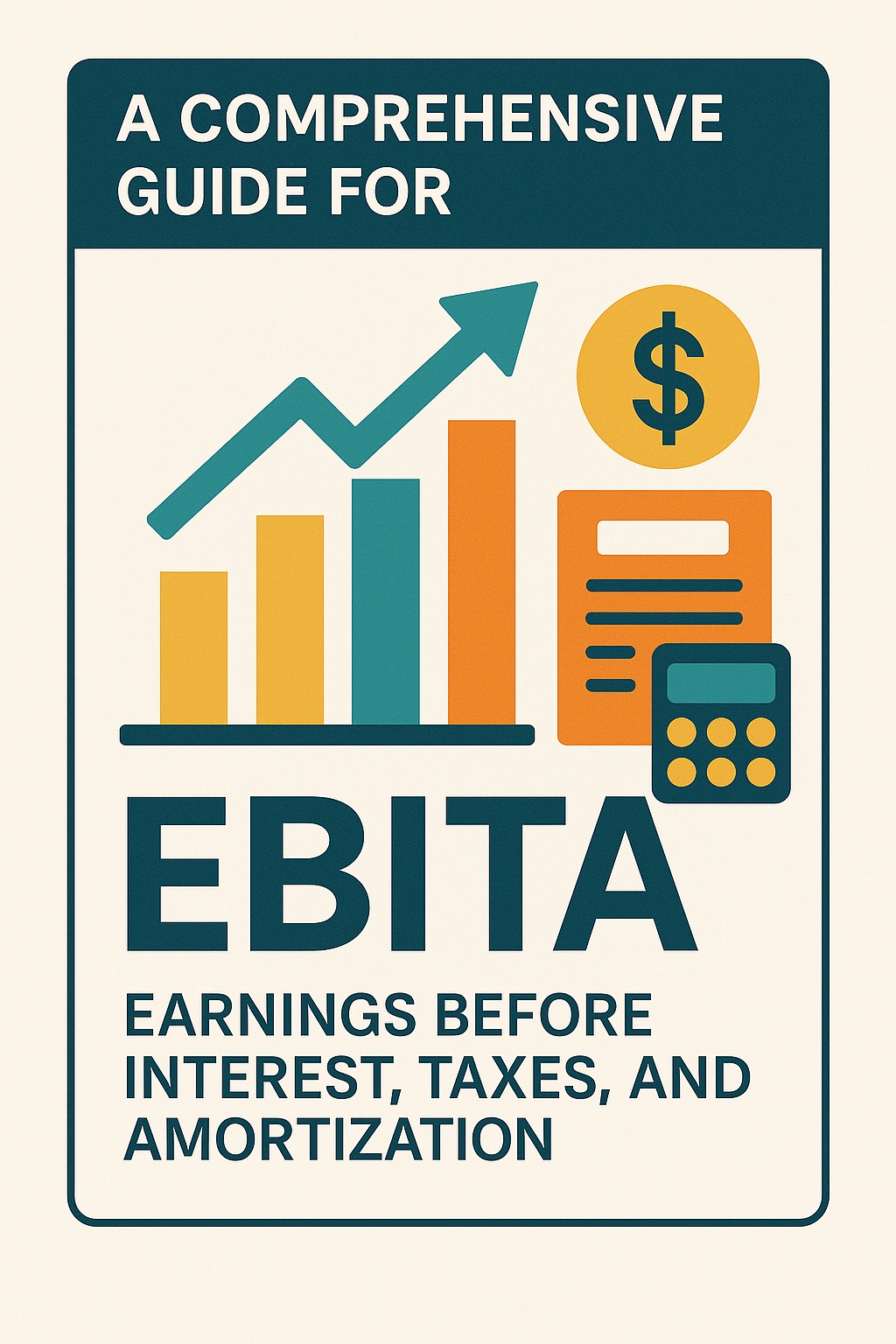
Have you ever wondered how investors calculate the true profits of firms beyond just net income? And why does one firm show different performance from another when both have similar revenues?
Understand it by an example: Company A and Company B both have revenues of \$10 million in 2023, but now operationally Company A is 40% better on EBITA.
Still not understood well, Warren Buffett has also said this thing long before that: “Accounting is the language of business.”
If you want to truly learn this language, get familiar with important terms like EBITA. So, let's get into how this working metric exposes the true strength behind a company.
What Is EBITA?
It stands for Earnings Before Interest, Taxes, and Amortization. It is a financial metric used to assess a company's profitability by evaluating its core operations. This whole thing happens with the consideration of the effects of capital structure (interest), tax environments, and amortization of intangible assets. If we see clearly, it’s all about focusing on operating performance without accounting for financial and non-cash expenses.
How to Calculate
The basic formula for calculating EBITA is:
Net Income + Interest + Taxes + Amortization
In case you start with operating income (EBIT), you can calculate it as:
EBITA = EBIT + Amortization
Same way, if you're wondering how to calculate EBITDA, here's the formula:
Net Income + Interest + Taxes + Depreciation + Amortization
The simple way to calculate it is just to add back the depreciation and amortization to EBIT, alongside the interest and taxes.
Knowing how to calculate these things gives a better view of the operational success and cash flow potential of a company.
Why it Matters
Operational Focus: This method keeps focus on how well a company generates profits from its operations, regardless of financing structure or tax strategies.
Comparability: Companies from different sectors and regions usually face different tax laws, interest rates, and amortization policies. So, it helps analysts and investors in comparing companies on a more level playing field.
Investment Insight: This can be a useful metric for investors when checking for targets. It highlights the profits of a business’s core operations, which are most important during mergers and takeovers.
Cash Flow Proxy: It offers a rough proxy since it adds back non-cash charges like amortization. This also helps in estimating the cash-generating ability of a company.
EBITA vs. EBITDA vs. EBIT
The difference between EBITA and similar metrics is equally important to understand it fully. So here it is:
EBIT (Earnings Before Interest and Taxes) does not consider both interest and taxes but includes amortization and depreciation. Plus, it provides details about a company’s profits from its core operations before financial and tax decisions.
EBITDA, which stands for Earnings Before Interest, Taxes, Depreciation, and Amortization, helps assess a company's cash flow from its operations by adding back depreciation and amortization.
Then there's EBITA, which sits between the other two. It excludes amortization but still considers depreciation. This can be handy when amortization affects net income a lot, particularly in companies with many intangible assets. It's all about getting a clearer picture of financial health.
Limitations of EBITA
Even if it has many advantages, the limitations can't be ignored:
This is a financial measure that doesn't follow traditional accounting rules, so companies might report it in various ways, leading to confusion.
It also leaves out interest costs, which means it doesn't show the full picture for companies with a lot of debt.
Plus, by not considering amortization, it might make a business seem more profitable than it really is, as it overlooks the value of things like patents or customer connections.
A good case study for this is WeWork, which reported high EBITA figures before getting a failed IPO in 2019. However, when investors looked at its growing debt and lease costs, they realized the actual profitability wasn't as strong as it seemed, forcing them to rethink its overall value. (source: Corporate Governance Institute)
Conclusion
A CFA Institute study has found that more than 60% of financial analysts regularly use EBITA along with EBITDA and EBIT to value mid- to large-cap companies around the world. This highlights its importance in today's financial assessments.
The method we discussed in this article is a useful way to look at how well a company is doing, especially when you're comparing companies that have different taxes or ways of spreading out costs. It gives a clearer view of how effectively a business operates by focusing on earnings before interest, taxes, and amortization.
But again, it’s equally important to consider other financial metrics too, like EBIT, EBITDA, and net income, to know the full picture. Hereby, if you're an investor, analyst, or business owner, knowing these terms and calculations can help you make better financial choices.
FAQs
1. How can I calculate EBITA?
You can use this formula for calculating it: Net Income + Interest + Taxes + Amortization.
2. Can EBITA be negative, too?
Yes, and it shows that a company is not generating enough profit from its core operations before accounting for interest, taxes, and amortization.
3. When should I use EBITA over EBITDA?
See, you can use it when you have to analyze operational performance while wanting to account for the depreciation of physical assets.
4. How is EBITA important for investors?
It is important because it provides a clear picture of a company’s operational effectiveness without being affected by its financial structure or tax policies.
